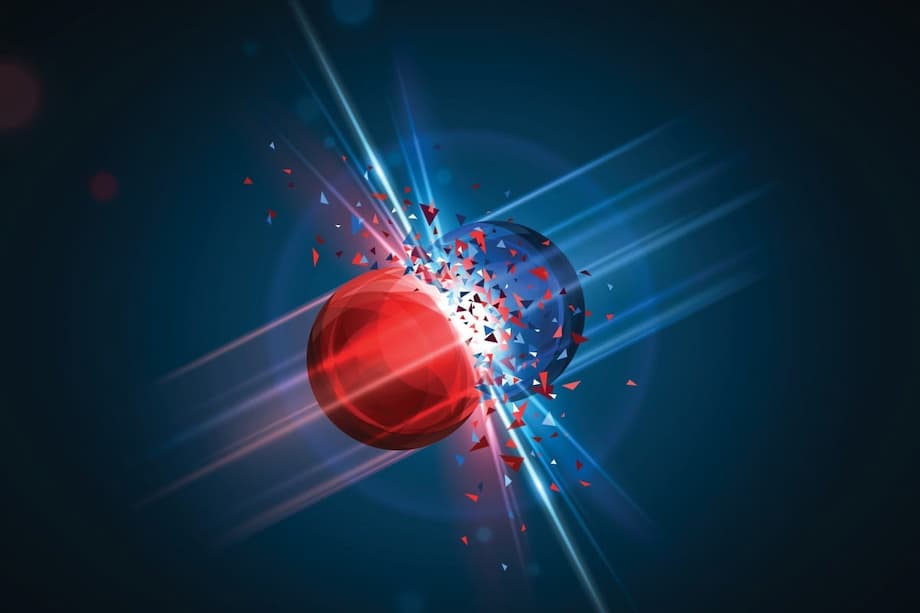Quantum Friction: A New Frontier in Physics
In a landmark experiment, Chinese scientists have directly observed quantum friction between two solid surfaces for the first time, using folded graphene as their testbed. This breakthrough, led by researchers at the Lanzhou Institute of Chemical Physics, not only challenges long-standing assumptions about how friction works at the atomic scale but also opens new avenues for designing ultra-efficient machines and next-generation nanodevices.
- Quantum Friction: A New Frontier in Physics
- What Is Quantum Friction?
- Graphene: The Wonder Material
- The Experiment: Observing Quantum Friction
- Broader Context: Quantum Friction Beyond Graphene
- Technological Implications: Towards Dissipation-Free Devices
- Challenges and Open Questions
- Expert Perspectives and Scientific Impact
- In Summary
Friction is a force that resists motion when two surfaces slide against each other. It is a phenomenon so familiar that it underpins everything from car tires gripping the road to the creaking of our knees. For centuries, scientists attributed friction to the roughness of surfaces—microscopic bumps and sticky patches that convert motion into heat. But as technology has advanced, especially at the nanoscale, this classical view has proven incomplete. The discovery of quantum friction in folded graphene marks a pivotal moment in our understanding of this everyday force.
What Is Quantum Friction?
Quantum friction refers to a subtle, non-classical force that arises from the quantum mechanical interactions between atoms, electrons, and even the vacuum itself. Unlike classical friction, which is dominated by surface roughness and direct contact, quantum friction can occur even between perfectly smooth surfaces or across tiny gaps, driven by fluctuations in electromagnetic fields or the quantum states of electrons.
Until recently, quantum friction was largely a theoretical concept. It had been predicted to play a role in the behavior of liquids flowing over solids, such as water moving through carbon nanotubes, but direct experimental evidence between two solid surfaces was lacking. The Chinese team’s work with folded graphene changes that.
Graphene: The Wonder Material
Graphene is a single layer of carbon atoms arranged in a honeycomb lattice. Since its isolation in 2004, it has dazzled scientists with its remarkable properties: it is incredibly strong, flexible, and conducts electricity better than copper. These characteristics make graphene an ideal platform for exploring the frontiers of physics, including quantum friction.
In the recent experiment, researchers folded ultra-thin sheets of graphene to create edges with controlled curvature and varying numbers of layers. This allowed them to probe how friction behaves at the atomic scale under different conditions, using advanced tools like atomic force microscopy and spectroscopy.
Why Folded Graphene?
Folding graphene introduces strain and curvature, which in turn alters the way electrons move within the material. This manipulation is crucial for studying quantum friction, as it enables the creation of unique electronic states that do not exist in flat graphene sheets. Specifically, folding can induce what are known as pseudo-Landau levels—discrete energy states that electrons are forced into due to the strain, mimicking the effects of a magnetic field.
The Experiment: Observing Quantum Friction
The Lanzhou team meticulously folded graphene sheets and measured the friction at the edges using atomic force microscopy. Surprisingly, they found that friction did not increase linearly with the number of layers, as classical physics would predict. In some cases, thicker folds actually slid more easily than thinner ones. This nonlinear behavior was a clear departure from established friction laws.
To understand this anomaly, the researchers turned to advanced spectroscopic techniques. They discovered that the strain from folding generated strong pseudo-magnetic fields within the graphene, leading to the formation of pseudo-Landau levels. These quantum states suppressed the usual pathways for energy dissipation—specifically, they reduced the coupling between electrons and vibrations (phonons) in the material. As a result, less energy was converted into heat, and friction was lowered.
The research team explained on social media: “This is the first experimental evidence of quantum friction between two solid surfaces.”
The findings, published in Nature Communications, have been hailed as a major advance in both fundamental physics and materials science.
How Does Quantum Friction Work in Folded Graphene?
At the heart of the discovery is the interplay between electrons and the structure of graphene. When graphene is folded, the resulting curvature and strain force electrons into discrete energy levels. These pseudo-Landau levels act like quantum speed bumps, making it harder for the electrons to dissipate energy as heat when the material is moved. This suppression of energy loss is the essence of quantum friction in this context.
As the number of folded layers increases, the strength of the pseudo-magnetic field and the effect of the pseudo-Landau levels diminish. Eventually, friction returns to a more classical, linear behavior. This transition provides a unique window into how quantum effects can be engineered and controlled in real materials.
Broader Context: Quantum Friction Beyond Graphene
The observation of quantum friction in folded graphene builds on a growing body of research exploring quantum effects at the interfaces between solids and liquids. For example, previous studies have shown that water can interact directly with the electrons in graphene, leading to quantum friction that affects how quickly water flows through carbon nanotubes or over graphene surfaces.
In these systems, the vibrations of water molecules (hydrons) can resonate with the collective oscillations of electrons (plasmons) in graphene, enhancing energy transfer and friction. This resonance effect is unique to certain combinations of materials and is not observed with other liquids like ethanol or methanol.
Such discoveries have profound implications for fields ranging from nanofluidics (the study of fluid flow at the nanoscale) to energy-efficient filtration and desalination technologies. By understanding and harnessing quantum friction, scientists hope to design materials and devices that can control energy dissipation with unprecedented precision.
Quantum Friction in Carbon Nanotubes and Water Flow
One of the most intriguing puzzles in nanoscience has been the behavior of water in carbon nanotubes—tiny pipes made from rolled-up sheets of graphene. Experiments have shown that water flows much faster through narrower nanotubes, defying classical expectations. The explanation, now supported by quantum friction theory, is that fewer electrons are available to interact with the water in narrower tubes, reducing resistance and allowing for faster flow.
As explained by researchers at the Max Planck Institute for Polymer Research: “Water and carbon form a quantum couple where the flow of water on a carbon surface is influenced by quantum friction, an unusual phenomenon.”
This insight not only solves a long-standing mystery in fluid dynamics but also points to new ways of designing membranes for water purification and energy generation.
Technological Implications: Towards Dissipation-Free Devices
The ability to control friction at the quantum level has far-reaching technological implications. In the realm of nanotechnology, reducing friction means less wear and tear on tiny machines, longer lifespans for moving parts, and lower energy consumption. This is especially important for devices operating at the nanoscale, where traditional lubricants are ineffective and even the slightest energy loss can be significant.
For example, recent research has demonstrated that carboxylated graphene quantum dots can enable superlubricity—a state of ultra-low friction—in steel contacts, reducing wear by up to 69 percent. Such advances are paving the way for energy-efficient and environmentally friendly lubrication technologies in industry.
In electronics, managing friction and energy dissipation is crucial for the development of low-power devices and quantum computers. Quantum friction could be harnessed to create switches, valves, or pumps that operate with minimal energy loss, revolutionizing the design of nanoscale machines and sensors.
Potential Applications and Future Directions
- Nanodevices: Quantum friction could enable the creation of moving parts that experience almost no wear, extending the lifespan of nanoscale machines.
- Filtration and Desalination: Understanding quantum friction at solid-liquid interfaces could lead to more efficient membranes for water purification.
- Energy Harvesting: Devices that convert mechanical motion directly into electrical energy could benefit from controlled quantum friction.
- Quantum Computing: Minimizing energy loss is essential for the stability and efficiency of quantum bits (qubits) and related technologies.
Challenges and Open Questions
Despite the excitement, many challenges remain. Quantum friction is a subtle effect, often requiring ultra-low temperatures and precise experimental setups to observe. Scaling these effects to real-world conditions—such as room temperature or in complex environments—will be a major focus of future research.
Moreover, the theoretical understanding of quantum friction is still evolving. While the experiments with folded graphene provide compelling evidence, scientists are eager to explore whether similar effects can be observed in other materials or under different conditions. The ultimate goal is to develop a comprehensive framework that can predict and control quantum friction across a wide range of systems.
Comparisons with Other Quantum Friction Studies
Other recent studies have explored quantum friction in different contexts, such as the interaction between neutral particles and surfaces in a quantum vacuum. These experiments often rely on measuring subtle corrections to the geometric phase—a property of quantum systems that accumulates over time. While these approaches are promising, the direct observation of quantum friction in folded graphene represents a more tangible and controllable system for future investigations.
Expert Perspectives and Scientific Impact
The scientific community has greeted the discovery with enthusiasm. The ability to engineer and observe quantum friction in a solid-solid interface is seen as a major step forward, with implications for both fundamental physics and practical technology.
One expert from the University of Manchester commented: “It is impressive that quantum phenomena usually occurring in solids appear in what would be considered a classical liquid as water. The experiments thus confirm the basic mechanism of solid-liquid quantum friction.”
By extending these insights to solid-solid interfaces, the Chinese team has demonstrated that quantum friction is not just a curiosity but a real force that can be measured, manipulated, and potentially harnessed for technological innovation.
In Summary
- Chinese scientists have directly observed quantum friction between two solid surfaces using folded graphene, marking a world-first in experimental physics.
- The discovery challenges classical friction models and reveals how quantum effects can suppress energy dissipation at the atomic scale.
- Folding graphene creates strain-induced pseudo-Landau levels, which lock electrons into discrete energy states and reduce friction.
- The findings have broad implications for nanotechnology, energy-efficient devices, water purification, and quantum computing.
- Future research will focus on extending these effects to other materials and real-world conditions, with the goal of designing dissipation-free quantum devices.




